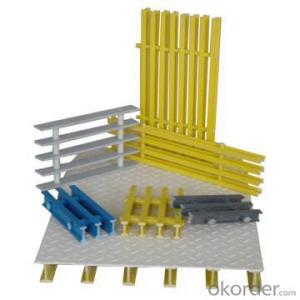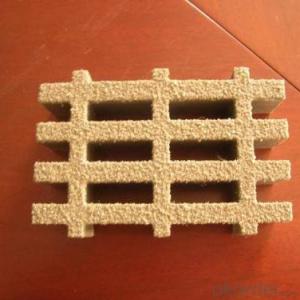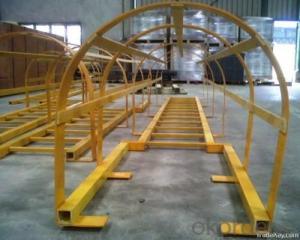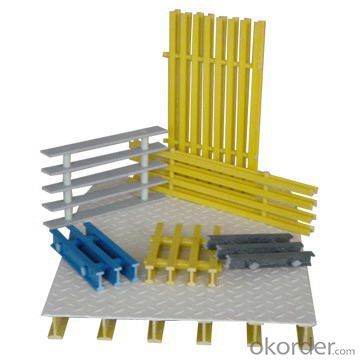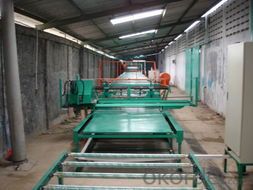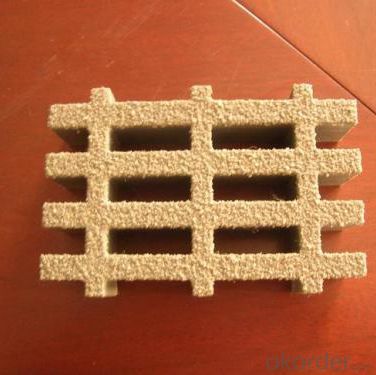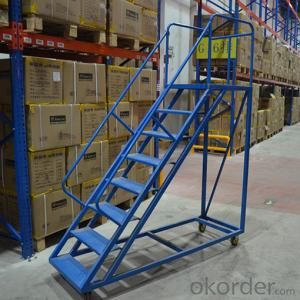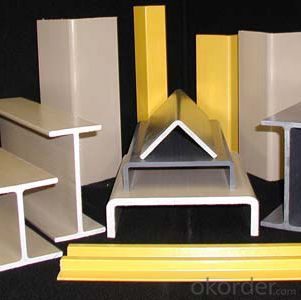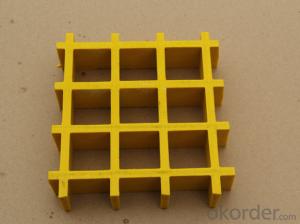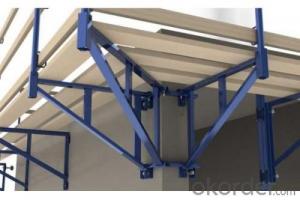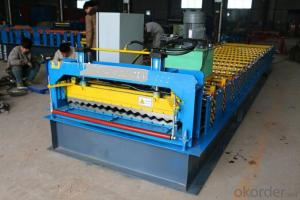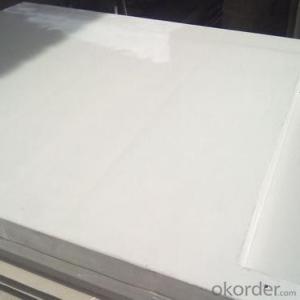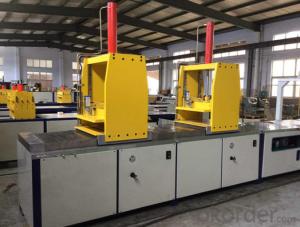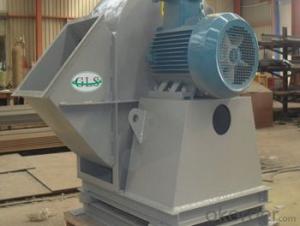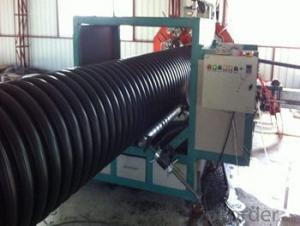FRP Pultrusion Profiles - Anti-Ageing FRP Pultruded Grating
- Loading Port:
- Tianjin
- Payment Terms:
- TT OR LC
- Min Order Qty:
- 20000 watt
- Supply Capability:
- 100000 watt/month
OKorder Service Pledge
OKorder Financial Service
You Might Also Like
Specification
FRP PULTRUDED GRATING AND PULTRUSION PROCESS
PRODUCT DESCRIPTION
Pultruded grating is made by a particular assembly process, which using “I” shape as its main load-bearing and special rod to go through the bearing bar. Pultruded grating include the standard grating and the custom grating, the custom grating can be designed to meet customer’s requirement or special using condition by changing the shape, size and space of the bearing bars, the surface can be covered with lozenge panel, grit panel, or added the anti-slippery sand directly.
FRP pultruded grating has the most characteristics of molded grating, but it has its distinct advantages, it has very high fiberglass content in the loading direction, so it has very high load capability, it has more superiority when used at wide span, so that the basic support will be decreased and the project cost will be reduced accordingly.
SPECIFICATION
The standard space between two crossbars is 6 inch or 12 inch.
Thickness (mm) | Bar width (mm) | Open space (mm) | Open rate (%) | Approx weight (kg/m |
25.4 | 15.2 | 22.8 | 60 | 13.2 |
25.4 | 15.2 | 15.2 | 50 | 15.9 |
25.4 | 15.2 | 10.1 | 40 | 18.5 |
25.4 | 40 | 10.8 | 21 | 14.5 |
38.1 | 15.2 | 22.8 | 60 | 15.8 |
38.1 | 15.2 | 15.2 | 50 | 19.1 |
38.1 | 15.2 | 10.1 | 40 | 22.4 |
50.8 | 25.4 | 25.4 | 50 | 16.6 |
50.8 | 25.4 | 12.7 | 33 | 21.1 |
FEATURES
a. Anti-corrosion and anti-rust
b. Light weight and high strength
c. Anti-flammable
d. Anti- fatigue
e. Safe and anti-slippery
f. Anti-ageing
g. Easy of maintenance
h. Excellent electromagnetism property
i. Good economic benefit
FIELDS SERVED
Sewage treatment,
water supply and drainage,
chemical industry,
oil industry,
power engineering,
pulp and paper,
construction engineering,
spinning, marine engineering.
APPLICATION
Operation terrace,
stair walkway,
ground floor,
trench cover,
sidewalk,
foot bridge,
equipment safety fence,
scaffold.
COMPANT DESCRIPTION
CNBM,China National Building Materials Group is a state-owned enterprise in charge of administrative affairs in china building materials industry. Established in 1984, CNBM is a large group corporation of building materials with total assets of 25 billion RMB and a total staff of 30,000.CNBM now owns 200 subordinating firms of solely owned and joint-venture companies.
CNBM International Corporation is one subsidiary of CNBM, we focus on offering good-quality products,professional service and complete solution to our customers. Strong delivery capacity, advanced technology& management, strong financing capability and excellent after-sale service are our advantages in sharing international market.
FAQ
1.Q:Are you factory or trading company ?
A:We are Factory produce FRP machines and FRP products.
2.Q:If can customized by customers requirements?
A:yes,we can produce the machine with customized size.
3.Q:How about the payment?
A:We accept any kind of payment.
4.Q:What is the guarantee?
A:Gurantee is one year.
5.Q:If you can training?
A:yes ,we can training in our factory also can send engineers to your factory training.
PICTURES

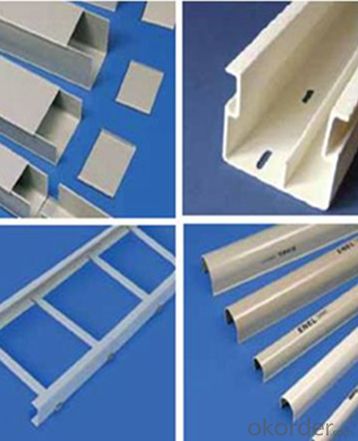
- Q: Can FRP pultrusion profiles be used in the renewable energy sector?
- FRP pultrusion profiles are definitely applicable in the renewable energy sector. They offer several advantages that make them suitable for various applications within the industry. One significant advantage of FRP pultrusion profiles is their exceptional strength-to-weight ratio. As large structures, like wind turbine blades or solar panel frames, are often involved in renewable energy projects, the lightweight nature of FRP profiles can significantly reduce transportation and installation costs. Additionally, their high strength ensures better load-bearing capabilities, guaranteeing the integrity and longevity of renewable energy infrastructure. Another benefit of FRP pultrusion profiles is their resistance to corrosion. Structures in the renewable energy sector are frequently exposed to harsh environments, such as offshore wind farms or coastal solar installations. The corrosion-resistant properties of FRP profiles make them an ideal choice as they do not rust or degrade when exposed to moisture, saltwater, or chemicals commonly found in these environments. This characteristic significantly reduces maintenance and replacement costs, making FRP profiles a cost-effective solution for the renewable energy sector. Moreover, FRP pultrusion profiles offer design flexibility. They can be custom-engineered to meet specific project requirements, allowing for the creation of complex shapes and sizes. This versatility enables the development of innovative and efficient renewable energy solutions, such as aerodynamically optimized wind turbine blades or lightweight support structures for solar panels. In conclusion, FRP pultrusion profiles are well-suited for the renewable energy sector due to their lightweight nature, high strength, resistance to corrosion, and design flexibility. These characteristics make them an excellent choice for various applications, including wind energy, solar power, hydroelectric projects, and more.
- Q: Are FRP pultrusion profiles resistant to vibration or shock?
- Yes, FRP pultrusion profiles are generally resistant to both vibration and shock due to their high strength-to-weight ratio and excellent damping properties. The composite materials used in their construction, such as fiberglass and resin, offer excellent resistance to vibrations and mechanical shocks, making them ideal for applications where such conditions are present.
- Q: What are the different shapes and sizes of FRP pultrusion profiles available?
- FRP (Fiber Reinforced Polymer) pultrusion profiles are available in a wide range of shapes and sizes to cater to various applications and industries. Some of the commonly available shapes include: 1. Square and rectangular profiles: These profiles are available in different sizes and are widely used in construction, infrastructure, and industrial applications. They offer excellent structural strength and can be used as beams, columns, or other load-bearing elements. 2. Round profiles: Round FRP pultrusion profiles are often used as structural supports, handrails, and guardrails. They are available in various diameters to suit different requirements. 3. I-beams: FRP I-beams are popular in the construction industry due to their high strength-to-weight ratio. They are often used as structural members, supporting elements, or floor joists. 4. Channel profiles: Channel-shaped FRP profiles are used for applications that require a combination of strength and versatility. They find applications in cable trays, equipment supports, and framing systems. 5. Angle profiles: FRP angle profiles are commonly used as reinforcements or supports in construction and industrial settings. They provide stability and structural integrity to various components. 6. Custom profiles: Apart from the standard shapes mentioned above, FRP pultrusion profiles can also be customized to meet specific requirements. Manufacturers can create profiles with unique shapes and sizes to suit the needs of different applications. It is important to note that the availability of shapes and sizes may vary among manufacturers. Therefore, it is advisable to consult with suppliers or manufacturers to determine the specific range of FRP pultrusion profiles they offer.
- Q: Are FRP pultrusion profiles UV-resistant?
- Yes, FRP (Fiber Reinforced Polymer) pultrusion profiles are typically UV-resistant. This is because they are manufactured using a combination of reinforcing fibers, such as glass or carbon, and a polymer matrix, such as polyester or vinyl ester. These materials are inherently resistant to UV radiation, which means that FRP pultrusion profiles can withstand prolonged exposure to sunlight without significant degradation or loss of mechanical properties. However, it is important to note that the specific UV resistance of FRP pultrusion profiles can vary depending on the type and quality of the polymer matrix used in their construction. Therefore, it is advisable to consult the manufacturer or supplier for detailed information on the UV resistance of specific FRP pultrusion profiles.
- Q: Are FRP pultrusion profiles resistant to termites or other pests?
- FRP pultrusion profiles possess inherent resistance against termites and other pests. Unlike traditional wood or metal materials, FRP profiles fail to serve as a food source for termites or any other pests. FRP comprises reinforced fibers and a polymer matrix, typically constructed from fiberglass and resin. These constituents lack appeal to pests and do not provide any nutritional value, thus rendering FRP profiles highly resistant to termite damage or infestation. The capability of withstanding pests is among the numerous benefits of employing FRP pultrusion profiles across diverse applications, particularly in outdoor or humid settings, where termites frequently thrive.
- Q: Are FRP pultrusion profiles resistant to ultraviolet radiation?
- Yes, FRP pultrusion profiles are generally resistant to ultraviolet radiation. The combination of the composite material and the resin used in pultrusion manufacturing provides excellent UV resistance, making them suitable for outdoor applications.
- Q: Are FRP pultrusion profiles resistant to caustic solutions?
- Yes, FRP (Fiber Reinforced Polymer) pultrusion profiles are generally resistant to caustic solutions. The combination of the reinforcing fibers and the polymer matrix used in FRP pultrusion provide excellent chemical resistance. Caustic solutions, such as strong alkaline substances, can often corrode or degrade traditional materials like steel or wood. However, FRP pultrusion profiles are highly resistant to chemical attack, making them suitable for applications where exposure to caustic solutions is common. This resistance makes FRP pultrusion profiles an ideal choice for industries such as chemical processing, wastewater treatment, and marine environments where corrosive substances are present. Nonetheless, it is important to consult the manufacturer's specifications and guidelines to ensure that specific caustic solutions are compatible with the particular FRP pultrusion profile being used.
- Q: How do FRP pultrusion profiles perform in high-wind areas?
- FRP (Fiber Reinforced Polymer) pultrusion profiles are highly suitable for use in high-wind areas due to their exceptional performance characteristics. These profiles are engineered using a combination of continuous glass fibers and a polymer resin matrix, resulting in a lightweight yet incredibly strong and durable material. One of the key advantages of FRP pultrusion profiles in high-wind areas is their excellent resistance to corrosion. Unlike traditional materials such as steel or wood, FRP does not rust or rot when exposed to moisture or harsh weather conditions. This makes them ideal for coastal or hurricane-prone regions where wind-driven saltwater or heavy rain can cause accelerated deterioration in other materials. Additionally, FRP pultrusion profiles have a high strength-to-weight ratio. This means that they can withstand high wind loads without adding excessive weight to structures. Their lightweight nature allows for easy transportation and installation, reducing the overall costs and time required for construction projects in high-wind areas. Furthermore, FRP pultrusion profiles exhibit excellent dimensional stability, meaning they resist warping or deforming under extreme wind pressures. This stability ensures that structures utilizing FRP profiles maintain their integrity and functionality even in the face of strong winds. Moreover, FRP pultrusion profiles can be designed and manufactured to meet specific wind load requirements, making them highly customizable for various applications. They can be engineered to have specific flexural or tensile strengths, allowing for tailored solutions to suit the demands of high-wind areas. Overall, FRP pultrusion profiles are an excellent choice for use in high-wind areas due to their corrosion resistance, high strength-to-weight ratio, dimensional stability, and customization capabilities. These profiles provide a reliable, long-lasting, and cost-effective solution for structures exposed to intense wind loads, ensuring the safety and durability of the built environment.
- Q: Can FRP pultrusion profiles be used in electrical insulation applications?
- Yes, FRP (Fiber Reinforced Polymer) pultrusion profiles can be used in electrical insulation applications. FRP profiles offer excellent electrical insulation properties, making them suitable for a wide range of electrical applications. The high dielectric strength of FRP materials ensures that electrical currents are effectively contained within the desired pathways, preventing leakage and electrical hazards. Additionally, FRP profiles possess low electrical conductivity, reducing the risk of electrical shorts and improving overall safety in electrical insulation applications. The non-magnetic nature of FRP materials is also advantageous, as it eliminates the possibility of electromagnetic interference (EMI) in sensitive electrical systems. Furthermore, FRP pultrusion profiles are lightweight, corrosion-resistant, and have a long service life, making them a cost-effective and durable solution for electrical insulation applications.
- Q: How do FRP pultrusion profiles perform in chemical processing plants?
- Due to their outstanding performance in challenging environments, FRP pultrusion profiles are extensively utilized in chemical processing plants. Specifically engineered to endure the harsh conditions prevalent in such facilities, these profiles are favored over traditional materials like steel or concrete. One key benefit of FRP pultrusion profiles in chemical processing plants lies in their remarkable resistance to corrosion. These profiles exhibit a high level of resistance to a diverse range of chemicals, including acids, alkalis, solvents, and highly corrosive substances. This resistance ensures the profiles' durability and integrity even in aggressive chemical environments, subsequently decreasing maintenance costs and prolonging equipment service life. Moreover, FRP pultrusion profiles boast exceptional mechanical properties, such as a high strength-to-weight ratio. This enables them to bear heavy loads without compromising their structural integrity. Additionally, their lightweight nature facilitates easier handling and installation, thereby reducing labor and transportation expenses. Furthermore, FRP pultrusion profiles possess excellent electrical insulation properties, making them ideal for applications that require minimal electrical conductivity. This eliminates the risk of electrochemical reactions and ensures the safety of both personnel and equipment. Another advantage of FRP pultrusion profiles is their ability to provide effective thermal insulation. They effectively minimize heat transfer, thereby reducing energy loss and enhancing energy efficiency within chemical processing plants. Additionally, FRP pultrusion profiles are non-magnetic, making them advantageous in certain applications where magnetic interference could disrupt sensitive equipment or processes. In summary, FRP pultrusion profiles offer exceptional corrosion resistance, mechanical strength, electrical insulation, thermal insulation, and non-magnetic properties, making them exceedingly suitable for chemical processing plants. These profiles provide a cost-effective and long-lasting solution that can endure the demanding conditions encountered in chemical processing environments, ensuring reliable performance and reduced maintenance requirements.
Send your message to us
FRP Pultrusion Profiles - Anti-Ageing FRP Pultruded Grating
- Loading Port:
- Tianjin
- Payment Terms:
- TT OR LC
- Min Order Qty:
- 20000 watt
- Supply Capability:
- 100000 watt/month
OKorder Service Pledge
OKorder Financial Service
Similar products
Hot products
Hot Searches
Related keywords
